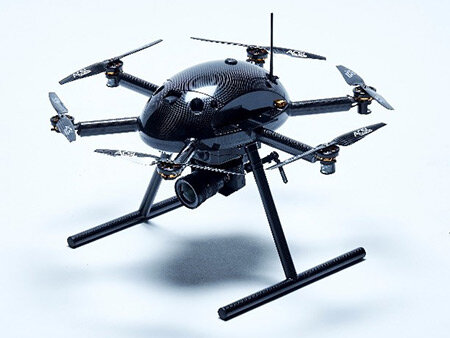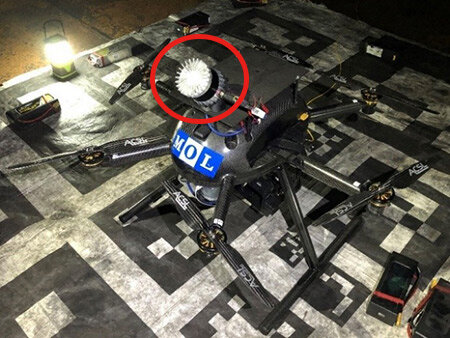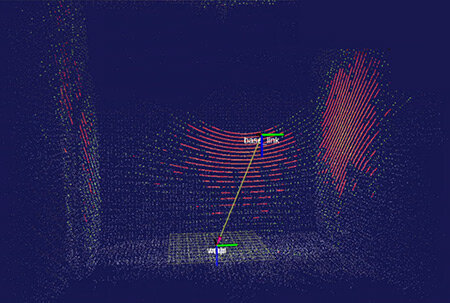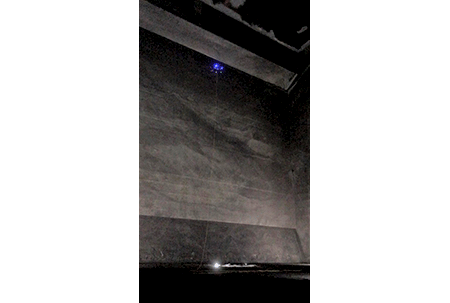- JP
- EN
MOL and ACSL Use Flying Drone to Conduct Autonomous Inspection of Vessel Holds under non GNSS and dark environment
June 11, 2021
Mitsui O.S.K. Lines, Ltd.
Autonomous Control Systems Laboratory Ltd.
TOKYO-Mitsui O.S.K. Lines, Ltd. (MOL; President & CEO: Takeshi Hashimoto) and Autonomous Control Systems Laboratory Ltd. (ACSL; President & COO: Satoshi Washiya, PhD; Headquarters: Edogawa-ku, Tokyo) today announced the success of a demonstration test using a made-in-Japan flying drone to inspect the hold of an MOL-operated coal carrier in May.
Coal iron vessels have spacious holds to load massive amounts of cargo and some holds height reach 20m from bottom of holds. It is difficult for crews to access upper parts of the holds for inspections, but the use of drones has the potentials to address this issue. Many industrial drones detect their position information by receiving signals from the Global Navigation Satellite System (GNSS). However, the drones cannot access the GNSS radio frequencies for enclosed space such as inside of cargo holds with hatch cover closed and they have to be operated manually onboard by a skilled pilot.
MOL and ACSL completed a successful autonomous flight of an ACSL made drone, ACSL-PF2 equipped with LiDAR SLAM technology, which enable to estimate its own position in holds with hatch cover closed (enclosed conditions) (*1). Also, MOL and ACSL developed wired connection via optical fibre cables linkage with such drone, which enhance more safe autonomous flight under non-GNSS environments. Furthermore, MOL and ACSL succeeded in shooting higher-definition inspection images even in dark areas by mounting high-resolution camera compared to ones used previously for inspection of holds.
MOL and ACSL will keep developing user-friendly drones for crews to operate such autonomous flight capable type of drones and inspection methods in enclosed and dark spaces such as ballast tanks and various type of holds.
(*1) After completion of cargo loading, hatch covers are closed and the vessel will sails to its unloading port. In this demonstration test, the term "enclosed conditions" means there was no cargo in holds with hatch cover closed.
[ Video of the demonstration test ]





[Mitsui O.S.K. Lines, Ltd.]
Mitsui O.S.K. Lines, Ltd. (MOL), as a multi-modal transport group, meets the needs of the era in a wide variety of fields including the operation of dry bulkers such as iron ore carriers, coal carriers, and woodchip carriers, tankers that carry crude oil, LNG carriers that transport liquefied natural gas, and car carriers.
View MOL's company outline at About MOL | Mitsui O.S.K. Lines
[Autonomous Control Systems Laboratory Ltd. (ACSL)]
ACSL develops made-in-Japan industrial drones to realize labor-saving/full automation of current operations in industrial fields. Especially, the company offers cutting-edge autonomous control technology mounted with image processing and AI edge computing technology, and industrial drones equipped with the autonomous control technology. The drones have already been adopted in various fields such as inspection of infrastructure, mail service/logistics, and disaster prevention.
View ACSL's company outline at ACSL | Autonomous Control Systems Laboratory Ltd.
